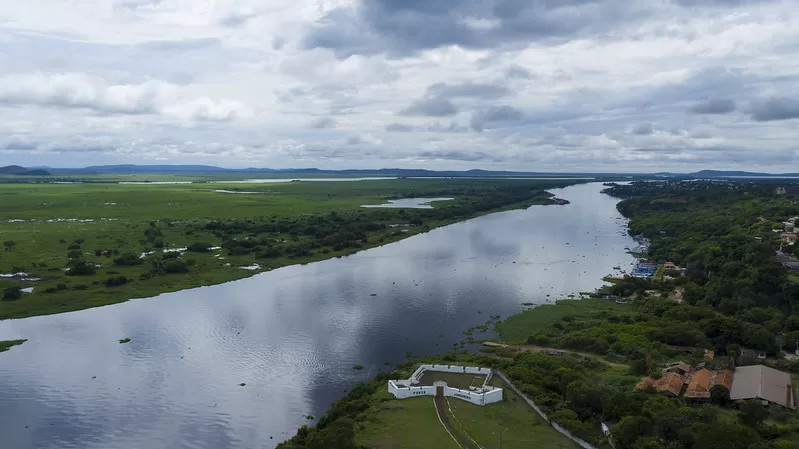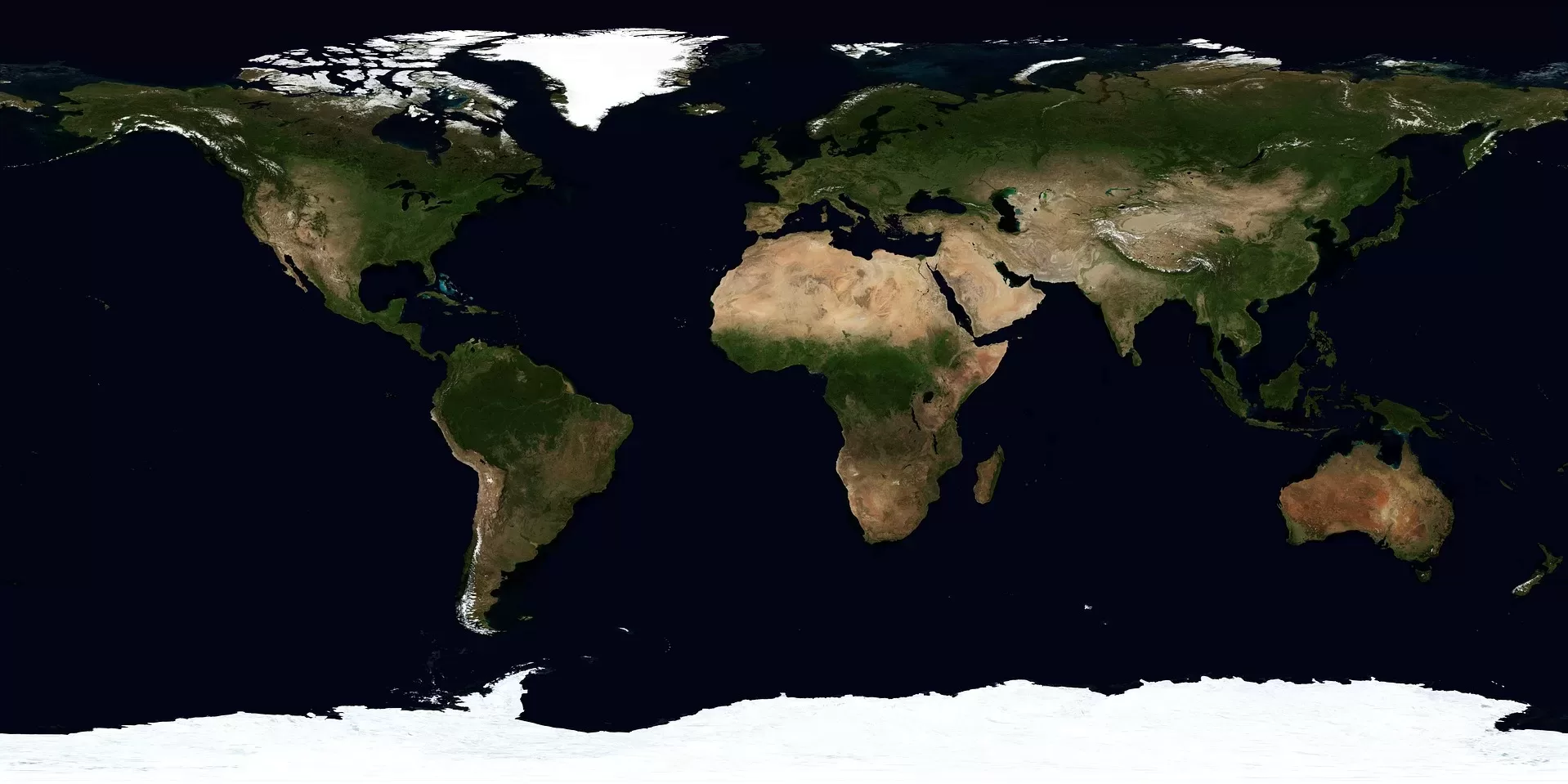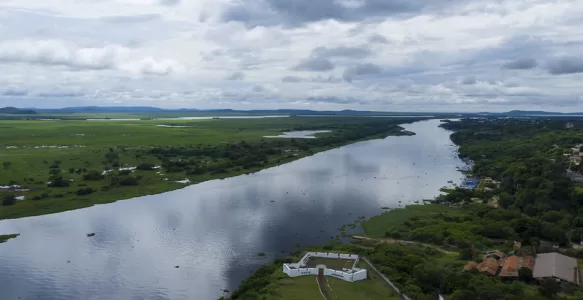The Pantanal is one of the largest and most biodiverse regions on the planet—a true sanctuary of life that captivates and surprises everyone fortunate enough to experience it. Covering approximately 250,000 square kilometers, the Pantanal is a vast floodplain that extends across three Brazilian states—Mato Grosso, Mato Grosso do Sul, and part of Goiás—as well as parts of Bolivia and Paraguay. Recognized as the world’s largest freshwater biome, this region holds immense ecological, economic, and cultural significance, representing an invaluable natural heritage for Brazil and the world.

What is the Pantanal?
The Pantanal is a complex of flooded areas, plains, and wetlands formed by the periodic flooding of rivers that traverse the region. Its defining characteristic is its ability to accumulate water during the rainy season, which occurs mainly between November and March, and to partially dry out during the dry season, from April to October. This cycle of flooding and drying creates a unique ecosystem, where life adapts remarkably to seasonal changes.
The term “Pantanal” derives from the Spanish word “pantano,” meaning “swamp” or “flooded area.” Despite its reputation as a flooded region, the Pantanal also contains higher elevation areas that remain dry year-round, resulting in a diverse and complex landscape.
Division of the Pantanal
The Pantanal is divided into two major regions, each with distinct environmental and biodiversity characteristics:
- Northern Pantanal or Amazonian Pantanal: Located in the northernmost part, this region features a greater abundance of forests and a higher diversity of plant and animal species. It serves as a transitional zone between the Amazon rainforest and the Pantanal biome.
- Southern Pantanal or Mato Grosso do Sul Pantanal: This area is more open, characterized by vast plains and cerrado (savanna-like vegetation). It is renowned for its abundant wildlife and is a popular ecotourism destination.
The Pantanal is also segmented by rivers, such as the Paraguay River, which runs through the entire region, forming a network of channels, lakes, and flooded areas that sustain countless species.
Climate of the Pantanal
The climate is predominantly tropical continental, marked by high temperatures and significant rainfall. Summers are hot, humid, and rainy, with temperatures often exceeding 35°C, while winters are drier, with milder temperatures around 20°C.
During summer, intense rains cause flooding, inundating large parts of the region and creating ideal conditions for the reproduction of many species of plants and animals. In winter, water recedes, exposing the soil and forming pastures and dry vegetation, which are vital for the diet of various animals.
Wildlife of the Pantanal
The Pantanal is a paradise for nature lovers, hosting a vast array of animal species, many of which are emblematic and symbolize the region. Key species include:
- Birds: The Pantanal is famous for its incredible bird diversity, including toucans, hyacinth macaws, herons, kingfishers, jabirus, hummingbirds, caimans, rheas, sirens, toucanets, hawks, curassows, among others. The abundance of bird species makes the Pantanal one of the best places in the world for birdwatching.
- Reptiles: Caimans, spectacled caimans, and broad-snouted caimans, along with lizards, chameleons, green iguanas, snakes (such as anacondas, boa constrictors, and water snakes), and turtles (tortoises and freshwater turtles).
- Mammals: Jaguars, capybaras, deer, tapirs, giant anteaters, maned wolves, ocelots, peccaries, and the iconic Amazonian manatee, an endangered species and a symbol of conservation efforts in the biome.
- Fish: Various freshwater fish species, essential for the food chain and local economy, as well as a vital food source for traditional communities.
The biodiversity of the Pantanal is among the highest in the world, and its preservation is crucial to maintaining this ecological balance.
Flora of the Pantanal
The vegetation is equally diverse, adapted to water fluctuations and climate variations. It includes:
- Grasses and aquatic plants: Such as water hyacinth, Victoria regia, and other marsh plants along riverbanks and lakes.
- Trees and shrubs: Including ipê, jatobá, pequi, baru, cambará, and aroeira. Many of these species have economic and cultural importance for local communities.
The vegetation plays a vital role in maintaining water balance, preventing soil erosion, and providing food and shelter for animals.
Ecological and Economic Importance
The Pantanal is of extreme ecological importance, regulating the water cycle in Brazil’s Central-West region and acting as a natural filter that purifies water passing through its flooded areas. Its biodiversity contributes to the global ecosystem’s balance and serves as a valuable resource for scientific research and environmental education.
Economically, the Pantanal is essential for ecotourism, attracting visitors worldwide interested in birdwatching, photographic safaris, sport fishing, and eco-adventures. Additionally, the region supports cattle ranching, a traditional and sustainable activity when conducted responsibly, respecting the environment.
Challenges and Threats to Preservation
Despite its significance, the Pantanal faces numerous threats that jeopardize its ecological integrity, including:
- Deforestation and fires: For agricultural expansion and illegal burning, which destroy vegetation and threaten flora and fauna.
- Agricultural and livestock expansion: Unplanned land use and intensive farming can lead to degradation of the biome.
- Construction of dams and hydroelectric plants: Altering natural river flows and disrupting the flood and drought cycles.
- Pollution: Industrial, agricultural, and domestic waste contaminate water and harm aquatic ecosystems.
- Climate change: Rising global temperatures and altered rainfall patterns may affect the natural cycle of the Pantanal, causing prolonged droughts or excessive flooding.
The conservation of the Pantanal depends on coordinated actions among governments, local communities, NGOs, and society at large. Promoting environmental education, sustainable resource use, and implementing policies for protection and recovery are essential.
The Pantanal is one of Brazil’s and the world’s most significant natural heritages. Its rich biodiversity, ecological importance, and role in maintaining environmental balance make it a unique and irreplaceable biome. Preserving the Pantanal is a collective responsibility, ensuring the survival of countless species, the well-being of local communities, and the health of the planet.
Its beauty, diversity, and ecological significance inspire us to take concrete actions to protect this natural treasure, so future generations can also enjoy its wonders and learn to value nature in all its splendor.


